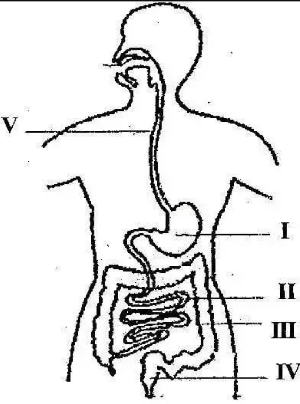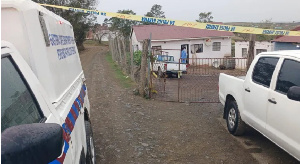- Abaare Reports
- Addi Kujay
- AfricaCNNnews
- Afriyie Kwaku Boachie
- AHAFO
- Alby News Ghana
- ASHANTI
- BONO EAST
- BRONG AHAFO
- Canard Afriq
- Cash In Trash
- CENTRAL
- Cherries
- Club Mate
- Courageous World
- Crest City News
- Current Affairs
- Daily Biz
- DailySpot
- Daniel Kaku
- Da Spicy News
- DC KWAME KWAKYE
- EASTERN
- EBI
- Facts Check
- Gabs Feed
- Ghana News Timeline
- Ghana News Update
- Godblessed1
- GREATER ACCRA
- Great Okocha
- Harry Graphic
- iNews
- Info News Ghana
- King B
- Kofipedia
- Lovely
- Managing GH
- Man Zekay
- Mart News Empire
- Maxkaytheblogger
- Mohammed Zakwan
- MyDailyNews
- Nana Kay News
- News Hub GH
- News Today
- News Zone 360
- Nine 9
- NORTH EAST
- NORTHERN
- ObuabaMedia
- OTI
- Priests News
- Royalnews360
- Sahara Writers
- SAVANNAH
- Simpsons Blog
- Skate News
- Smart News Ghana
- SpinnerWeb
- Teddytheblogger
- Ted News Ghana
- The news
- TheoNews
- Trending Now
- UPPER EAST
- UPPER WEST
- VOLTA
- Wadupgh
- Web Brief
- WESTERN
- WESTERN NORTH
Man Zekay Blog of Saturday, 5 August 2023
Source: manzekay
BECE Integrated Science Theory Questions And Answers for 2022 Candidates

1. (a) (i) The aim of the experiment.
To determine the drainage ability / water-holding capacity of the soils
(ii) Soil with the highest rate of drainage
Soil K
(iii) Soil with the highest water retention capacity.
Soil M
(iv) The soil most likely to lose water and dry faster after rainfall.
Soil K
(v) The soil most likely to be waterlogged after rainfall
Soil M
(vi) Which of the soil types would be suitable for maize cultivation? Soil L
(b) (i) What each of the symbols labelled I, II, III and IV represent
I – Danger
II – Corrosive
III – Highly inflammable / highly flammable
IV – No naked flame
(ii) One substance each that is associated with:
(α) I; DDT, Hydrogen cyanide, Salicylic acid
(β) II; Concentrated Inorganic acids, such as HCl, H2SO4, HNO3,
Concentrated inorganic bases, such as NaOH, KOH, Ca(OH)2
Household bleach
(γ) III. Petrol, Kerosene, LPG, Perfume, Insecticides, Alcohol
(iii) A place where the hazard symbol labelled IV is often displayed
Gas Filling stations, Storage places of combustible substances
(iv) Symbol(s) found on chemical containers I, II and III
(c) (i) General name for the devices. Simple machines
(ii) Identification of each of the devices labelled A, B, C and D.
A – Wheel barrow
B – Inclined plane
C – Pulley
D – Gear
(iii) The parts labelled I, II and III of device A when it is considered as a lever.
I – Effort
II – Load
III – Pivot
(iv) What the arrow represents in the device labelled B
Direction of effort / effort distance
(v) The type of work done with each of the devices labelled:
(α) C; Lifting objects
(β) D; moving a vehicle or parts of an engine efficiently
(d) (i) Names of the parts labelled I, II, III, IV and V
I – Stomach
II – Small intestines
III – Large intestines
IV – Rectum
V – Oesophagus / gullet
(ii) The part(s) of the digestive system where
(α) digestion of food substances occur
I and II
(β) digested food is absorbed into the bloodstream
(iii) The end-products of the digestion that is absorbed into the bloodstream
Amino acids, glucose, fatty acids and glycerol
2. (a) Four weather measuring instruments.
Barometer, rain gauge, anemometer, wind vane, hygrometer, sun dial / lightmeter
(b) The stages in the life cycle of a mosquito.
Egg stage, larva stage, pupa stage and adult stage
(c) (i) Two properties of water
• Colourless
• Odourless
• Tasteless
• Boils at 100°C
• Freezes at 0°C
(ii) Why it is advisable to wash clothes with soft water
It lathers better with soap, since it does not contain dissolved salts such as calcium carbonate, magnesium hydroxide and calcium sulphate.
There is no production of scum, therefore it makes washing easier and faster.
(d) Three ways in which soil profile is important.
• to determine the type of crop to grow
• to determine the most suitable farming system to use
• to determine the type / amount of fertilizer needed
• to determine the cultural practices to use
• to determine the type of tools / equipment to use
• to determine the cost of production
3. (a) Three modes of heat transfer. Conduction, convection and radiation
(b) (i) What a deficiency disease is
A disease that results from the lack or shortage of certain nutrients in the body of an organism
(ii) Three deficiency diseases in humans. Kwashiorkor, goiter, rickets, anaemia, scurvy, night blindness
(c) Two ways in which each of the following factors cause depletion of soil resources:
(i) burning
kills soil micro organism, such as nitrogen-fixing bacteria
makes the land bare, which results in soil erosion
causes faster evaporation of soil water
destroys soil nutrients
(ii) leaching
washes away water-soluble plant nutrients, especially nitrates and sulphur.
leads to soil acidity
affects the texture of the topsoil.
(d) Three processes that can change matter from one state to another.
Freezing
Condensation
Sublimation
Melting
Evaporation
Deposition
Entertainment










